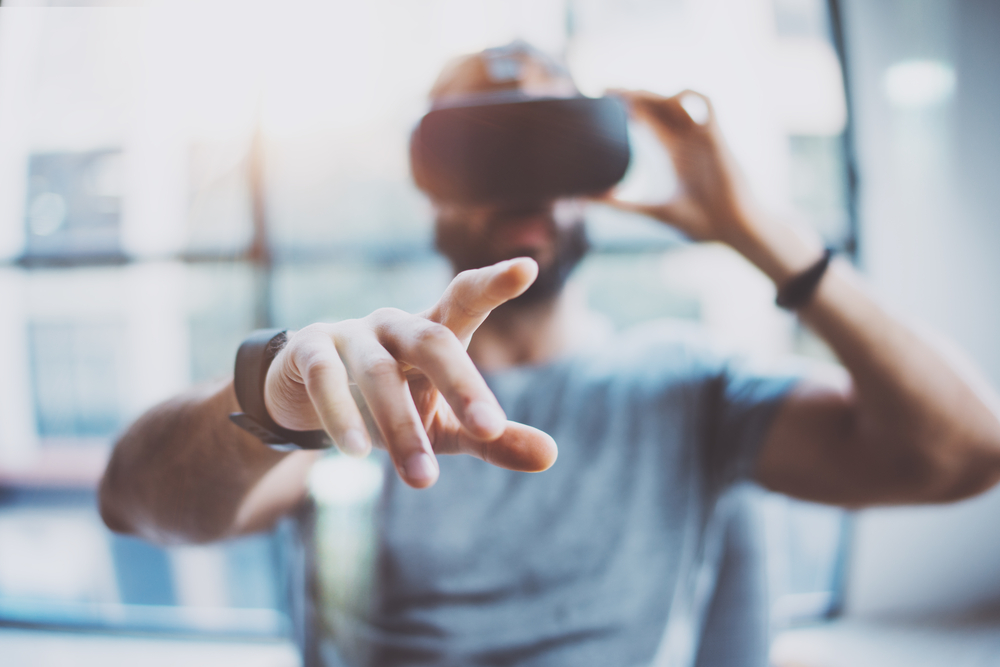Stepping into a Virtual World to Alleviate Chronic Pain
A cutting-edge tool to help reduce chronic pain might seem more at home in your child’s gaming setup than in your medicine cabinet. This technology, known as virtual reality (VR), is a computer-simulated environment viewable through special goggles. Surprisingly, VR is making waves as a potential breakthrough in chronic pain management.
Back in November 2021, the U.S. Food and Drug Administration (FDA) approved the marketing of a prescription home-use VR device, specifically designed to help reduce chronic low back pain.
Moreover, the renowned Spaulding Rehabilitation Hospital, affiliated with Harvard, has been exploring VR’s potential in chronic pain treatment for several years. Dr. David Binder, a physiatrist and director of innovation at Spaulding Rehabilitation Hospital, explains, “In the past, a lot of providers were using opioids as a way to treat chronic pain. As has become clear in recent years, opioids have many downsides, and providers are thirsty for alternative treatments. That’s why there’s increasing interest in this technology, and that’s why we’re studying it”.
Virtual Reality: An Overview
Virtual reality offers an immersive experience that creates the sensation of being in an entirely different world. The wearer puts on a VR headset, allowing a 360° view of a simulated environment, complete with sounds relayed through the headset or accompanying headphones.
Applying VR for Chronic Pain
In contrast to VR’s exciting application in video gaming, VR for chronic pain management is designed to foster tranquillity. Users are immersed in calming, often nature-themed environments, accompanied by soothing soundscapes. Importantly, these virtual spaces may be computer-generated or actual footage of real-world locations.
The chronic pain reduction VR devices often incorporate additional features. This includes guided narration for breathing exercises, techniques for redirecting negative thoughts about pain, and education about pain responses. This interactive and immersive approach facilitates a deeper understanding and more effective coping mechanisms for patients dealing with chronic pain.
The Potential Benefits of VR for Pain Management
The strategies used in VR for chronic pain reduction, such as mindfulness, meditation, guided imagery, or cognitive behavioural therapy, are all tools for managing stress and mood.
It is hypothesised that VR might take traditional therapies to a new level by amalgamating them and providing a more focused environment for the patient.
Moreover, VR could function as a distractor, diverting the brain’s attention from perceiving pain signals. This principle is commonly employed in pain management; for instance, rubbing a bumped elbow eases the pain by stimulating sensory responses that inhibit pain signals.
Does VR Really Work?
The evidence supporting VR for pain mostly pertains to acute, severe pain management, such as distraction during burn treatment or post-operative pain relief.
Regarding chronic pain, the FDA-approved VR device for chronic low back pain, EaseVRx, showed promising results. In a randomised trial involving 179 participants, pain levels reduced by over half for 46% of participants using the VR device, compared to just 26% in the control group.
The device developed by Dr. Binder and his team is still in the early stages of research. Preliminary trials in three Spaulding clinics are gauging the potential for a larger study.
Can You Try VR?
Presently, Spaulding’s VR device is not publicly available, and the back pain VR device requires a doctor’s order. While not yet covered by insurance, several VR devices with pain relief programs are available for purchase online or through private physical therapy practices.
Individuals can purchase basic VR devices for personal use to experience the technology and download meditation programs.
The Future of VR for Pain Reduction
While it’s too early to say whether VR will become a staple in chronic pain management, research advancements and its potential benefits paint a promising picture.
References:
- Chuan, Alwin & Zhou, J. & Hou, R. & Stevens, Catherine & Bogdanovych, A.. (2020). Virtual reality for acute and chronic pain management in adult patients: a narrative review. Anaesthesia. 76. 10.1111/anae.15202.
- JahaniShoorab, N., Zagami, S. E., Nahvi, A., Mazluom, S. R., Golmakani, N., Talebi, M., & Pabarja, F. (n.d.). The Effect of Virtual Reality on Pain in Primiparity Women during Episiotomy Repair: A Randomize Clinical Trial. PubMed Central (PMC). https://www.ncbi.nlm.nih.gov/pmc/articles/PMC4430883/
- FDA Authorizes Marketing of Virtual Reality System for Chronic Pain Reduction. (2021, November 16). FDA Authorizes Marketing of Virtual Reality System for Chronic Pain Reduction | FDA. https://www.fda.gov/news-events/press-announcements/fda-authorizes-marketing-virtual-reality-system-chronic-pain-reduction
- Godman, H. (2022, April 1). Virtual reality for chronic pain relief – Harvard Health. Harvard Health. https://www.health.harvard.edu/pain/virtual-reality-for-chronic-pain-relief
- A New Option for Pain Prevention Using a Therapeutic Virtual Reality Solution for Bone Marrow Biopsy (REVEH Trial): Open-Label, Randomized, Multicenter, Phase 3 Study. (2023, February 15). Journal of Medical Internet Research. https://doi.org/10.2196/38619














